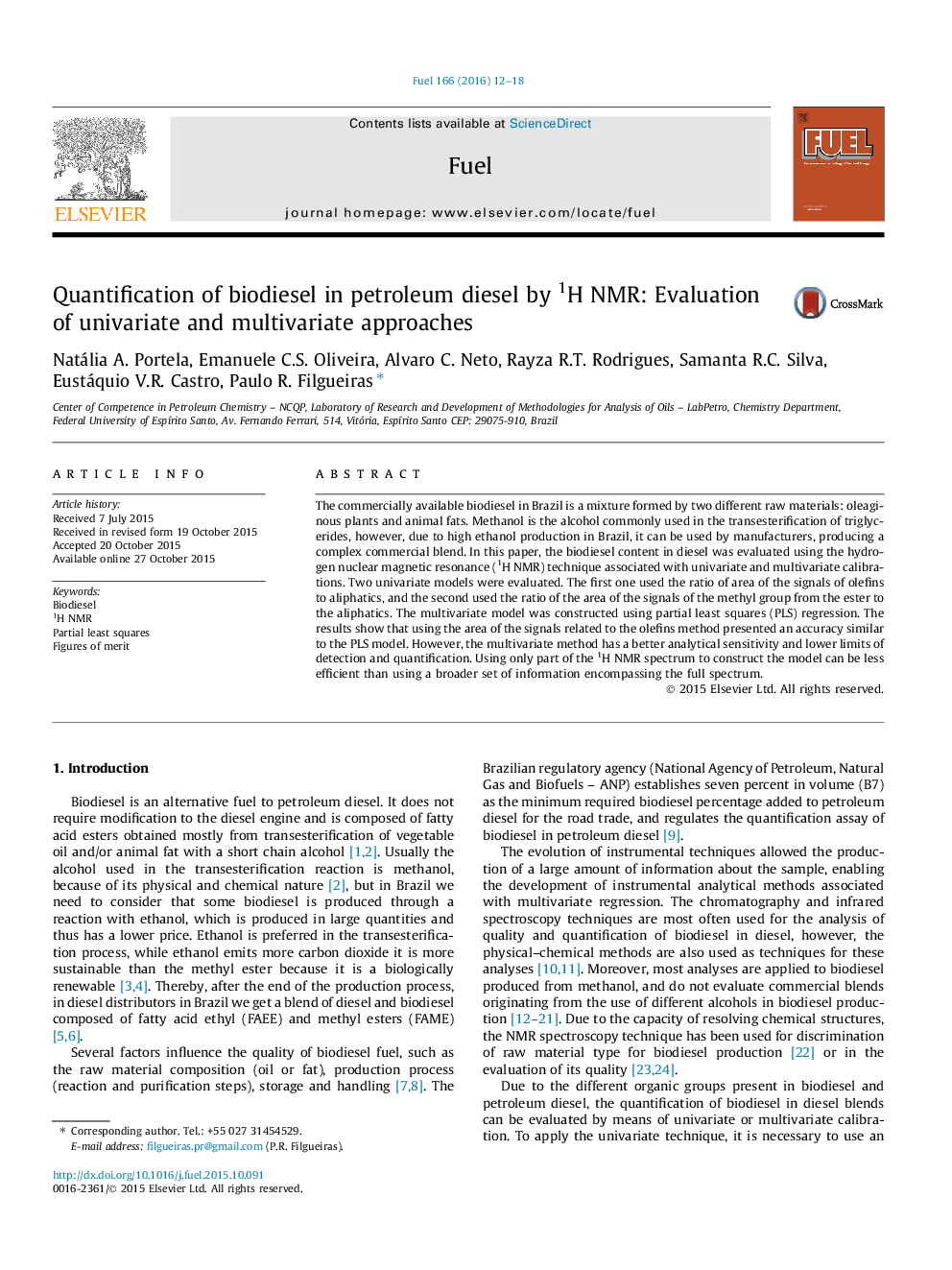| Article ID | Journal | Published Year | Pages | File Type |
|---|---|---|---|---|
| 6634129 | Fuel | 2016 | 7 Pages |
Abstract
The commercially available biodiesel in Brazil is a mixture formed by two different raw materials: oleaginous plants and animal fats. Methanol is the alcohol commonly used in the transesterification of triglycerides, however, due to high ethanol production in Brazil, it can be used by manufacturers, producing a complex commercial blend. In this paper, the biodiesel content in diesel was evaluated using the hydrogen nuclear magnetic resonance (1H NMR) technique associated with univariate and multivariate calibrations. Two univariate models were evaluated. The first one used the ratio of area of the signals of olefins to aliphatics, and the second used the ratio of the area of the signals of the methyl group from the ester to the aliphatics. The multivariate model was constructed using partial least squares (PLS) regression. The results show that using the area of the signals related to the olefins method presented an accuracy similar to the PLS model. However, the multivariate method has a better analytical sensitivity and lower limits of detection and quantification. Using only part of the 1H NMR spectrum to construct the model can be less efficient than using a broader set of information encompassing the full spectrum.
Related Topics
Physical Sciences and Engineering
Chemical Engineering
Chemical Engineering (General)
Authors
Natália A. Portela, Emanuele C.S. Oliveira, Alvaro C. Neto, Rayza R.T. Rodrigues, Samanta R.C. Silva, Eustáquio V.R. Castro, Paulo R. Filgueiras,
